Vietnamese women in Tu Duyen's paintings
It was around 1942 that artist Tu Duyen discovered the technique of Hand-printing on silk and applied it to create many valuable works throughout his painting journey. To this day, his hand-print paintings are still of interest to connoisseurs and have become an indelible mark of modern Vietnamese fine arts. In particular, he has a special favor for works inspired by the beauty of Vietnamese women.
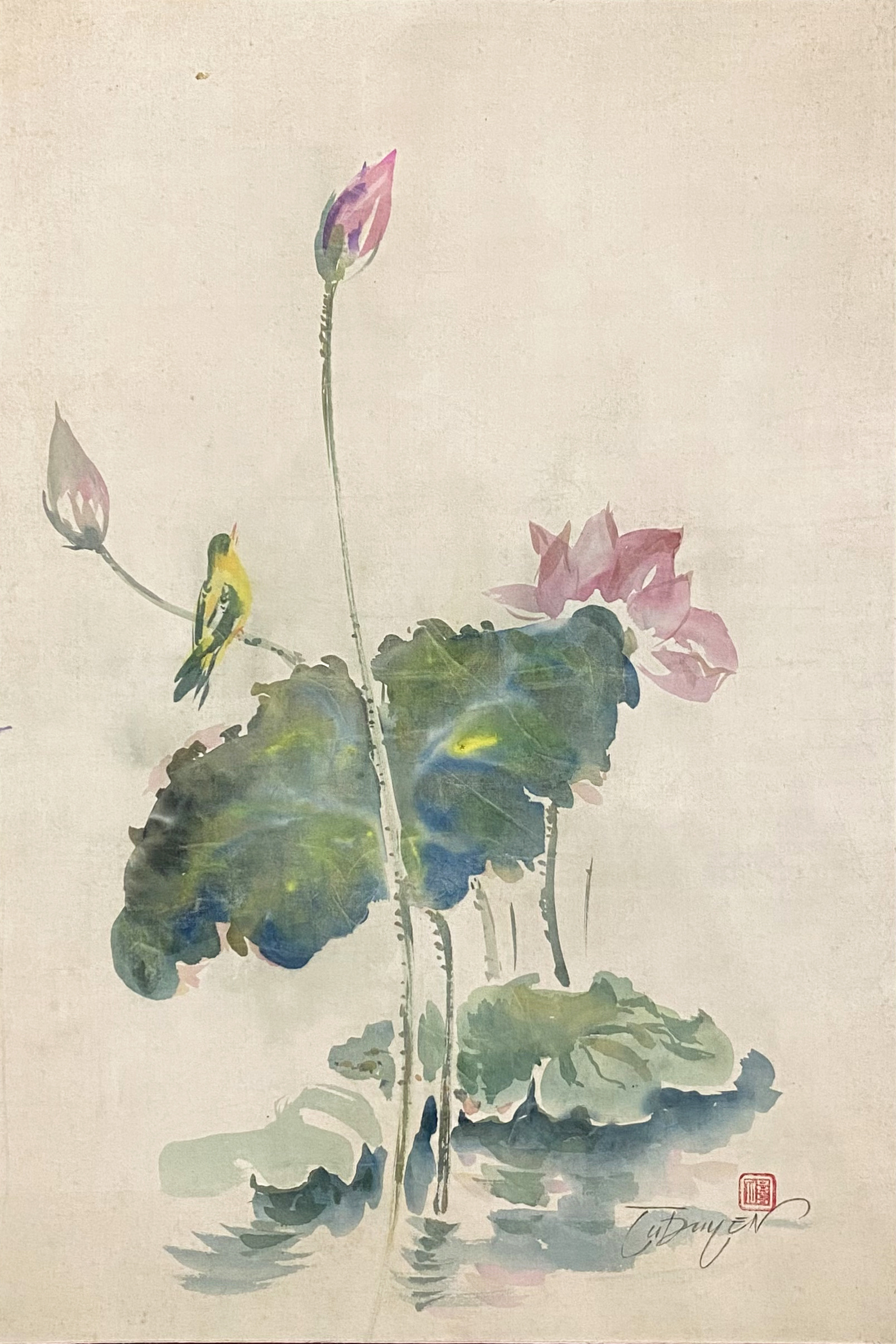
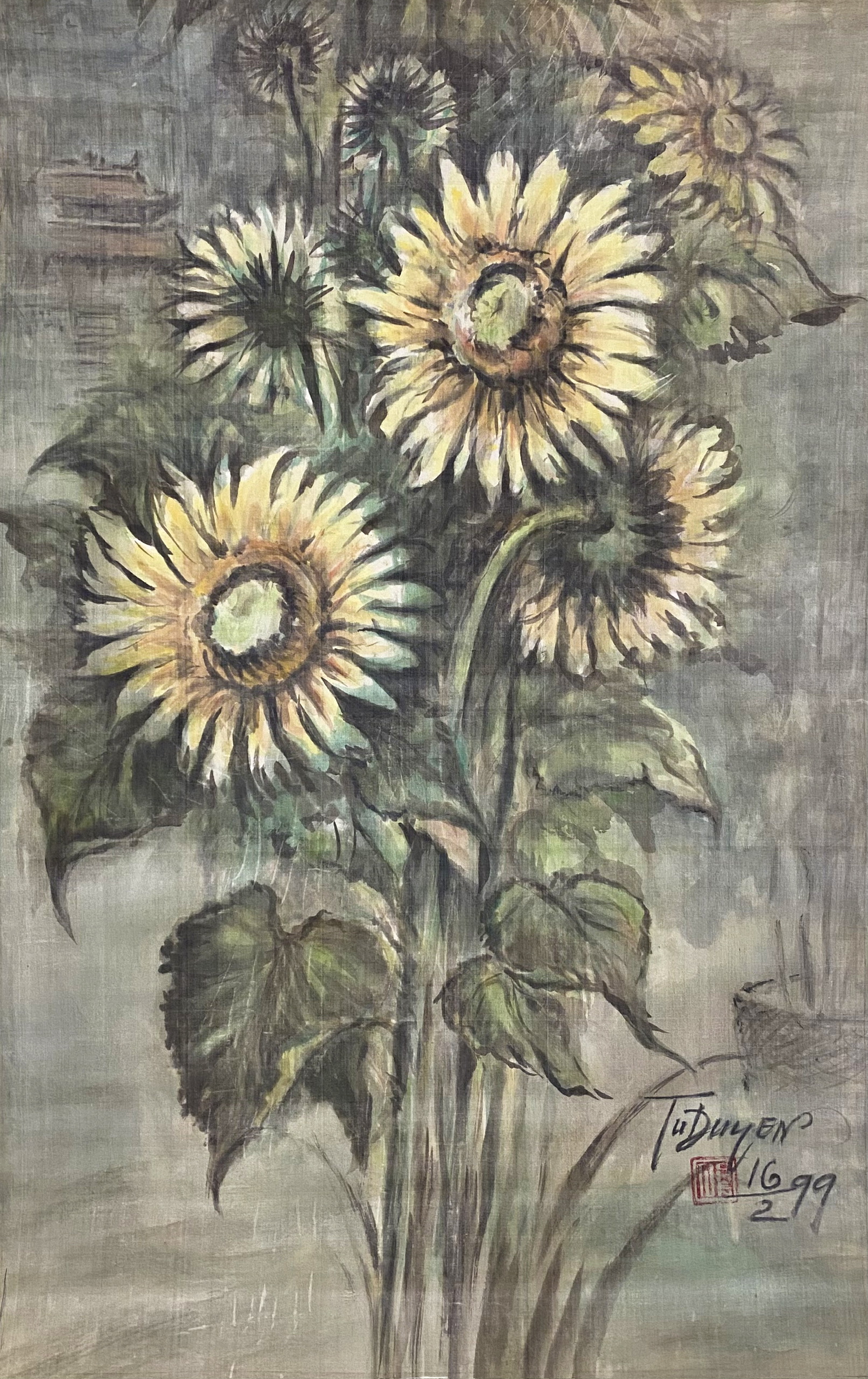
Pink Lotus 1 (1991) and Morning Sunflower (1999)
The exhibition "Old Fragrant Branches" (currently taking place at Annam Gallery, Ho Chi Minh City until March 31) with 18 works by the late artist Tu Duyen has reminded viewers of a gentle and poetic space, with the aesthetic object being graceful Vietnamese women in ao dai next to flowers and traditional musical instruments.
The paintings in the exhibition depict flowers from many angles. They are the pink lotus buds stretching out, waiting to bloom in the middle of the lotus pond in Pink Lotus 1 , the sunflowers that are resilient and strong in the wind in Sunflowers in the Morning and Sunflowers Against the Wind , or the works of Lilies and Buddha with fresh, cool lily branches placed next to the silent, majestic Buddha statue.
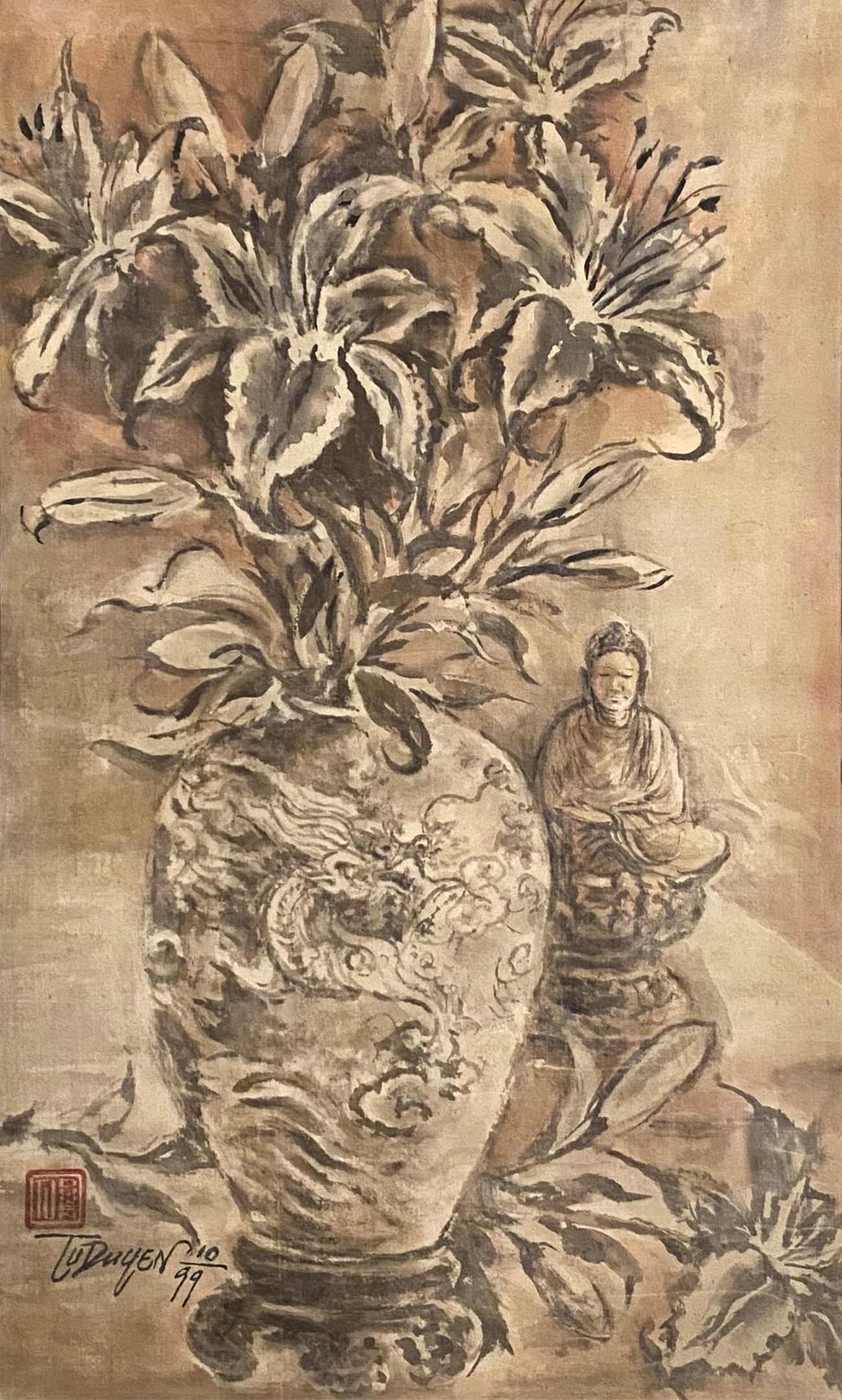
The Trumpet and the Buddha (1999)
The above flowers are also metaphors for the beauty and elegance, the gentleness and tenderness of women when artist Tu Duyen skillfully paired the image of flowers with beautiful Vietnamese women in graceful ao dai. In many different settings, they seem to let their souls drift through ancient melodies and songs played by traditional Vietnamese instruments such as the zither, the moon lute, or the pipa.
Looking at each woodblock silk painting by artist Tu Duyen, using his hands to mix and arrange colors, we feel like we are enjoying a poem, a piece of music with a delicate brushwork, soft and gentle language and color harmony. That is why the hand-print painting technique of more than 80 years ago is still enough to move the mind, immersing viewers in the unique artistic world of this silk painting master.
Improved woodblock painting
Mudra painting is a type of woodblock printing adapted from woodcut paintings. Having a great love for Vietnamese folk woodcuts, artist Tu Duyen persistently pursued and devoted much effort to researching this art form. In addition, he studied Japanese and Chinese printmaking for many years. By 1942, he had successfully found a way to improve his own woodblock printing technique and named it hand-printing. Up to now, this craft is rarely explored by artists in their creations.
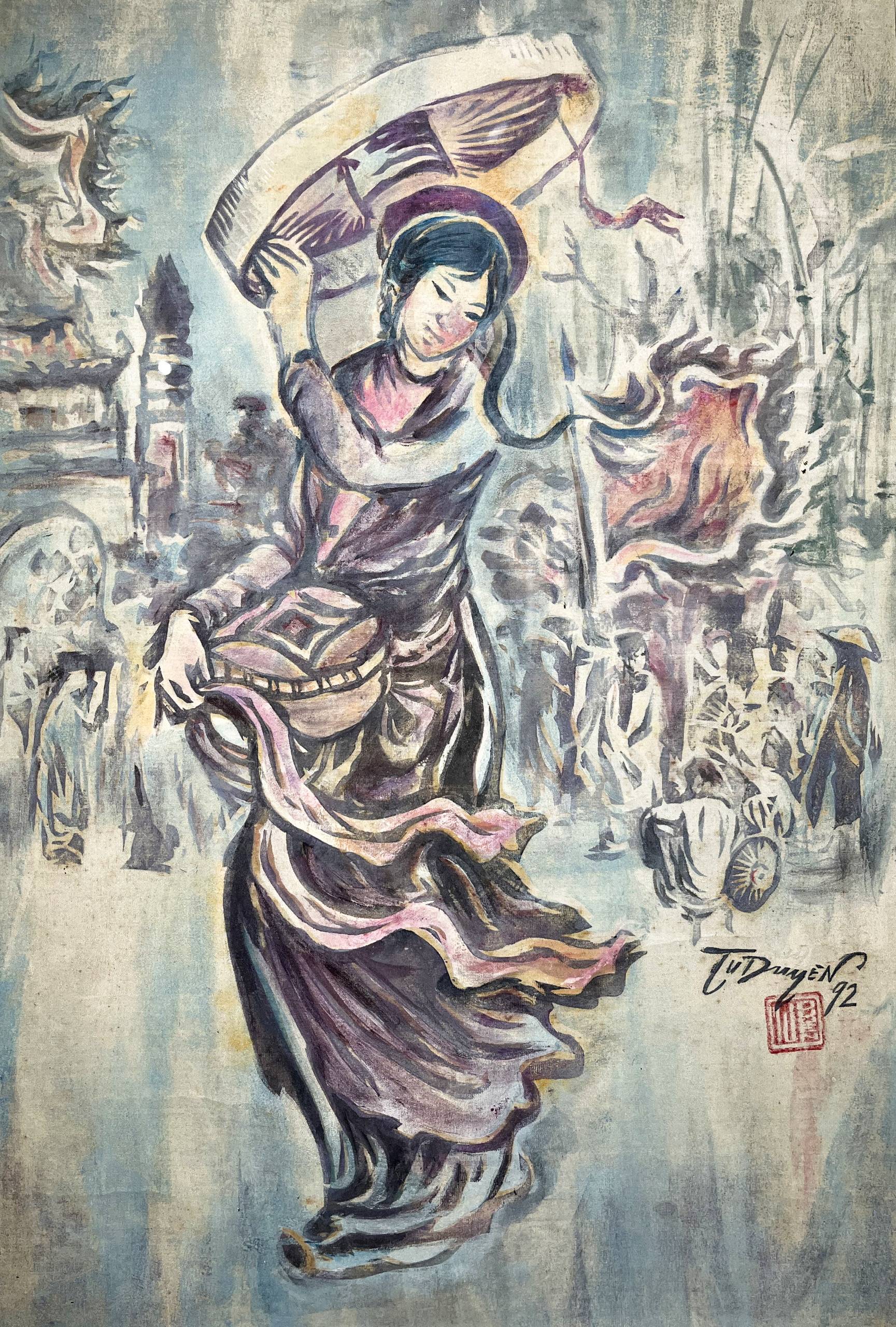

The Girl Passing Through the Courtyard (1992) and The Girl Behind the Curtain (circa 1965)
As artist Uyen Huy once commented, although they are both woodblock prints, when comparing hand-printed prints with two types of Vietnamese folk paintings such as Dong Ho and Hang Trong, the difference can be clearly seen. If Dong Ho paintings need each print (positive plate) for each color and must be printed over to mix colors, Hang Trong paintings must use a brush to draw bold and light strokes after each rough print, then artist Tu Duyen's woodblock prints only use two plates: a negative plate (color plate) engraved with deep lines to create the background, and a positive plate (line plate) engraved in relief to create the bold and light strokes for each line of the painting.
In particular, artist Tu Duyen does not use a roller like other silk-screen prints. He uses his fingertips and palms to mix the colors, then places the silk on the woodblock, rubs, presses, strokes, and beats to spread the colors as intended. Because of this way of spreading colors by hand, his paintings evoke a unique sense of flexibility, when the color blocks are changed from dark to light and vice versa, exuding an elegance and freedom that is difficult to convey with a brush.
Applying this technique, artist Tu Duyen created paintings with many themes, of which 3 main themes stand out: historical figures, typically the painting Tha lam quy nuoc Nam inspired by the national hero Tran Binh Trong; exploiting themes from folk songs, folk songs, literary works, such as: Kim Van Kieu, Chinh phu ngam ... and inspired by the beauty of Vietnamese women such as the works Thieu nu sau buoc ren, Thieu nu qua dinh ...
Artist Tu Duyen (1915 – 2012, real name Nguyen Van Duyen) was born into a Confucian family in the ancient village of Bat Trang, now in Gia Lam district, Hanoi. From 1935 to 1938, he passed the entrance exam and attended the preparatory class at the Indochina Fine Arts College. In 1939, he and his family moved to Saigon and worked as a silk painter and illustrator for newspapers. In 1942, he invented the hand-printing technique.
Thanks to these great technical contributions, the late painter Tu Duyen left a deep mark on Vietnamese fine arts that generations of young painters always admire. He was awarded a medal by the Vietnam Fine Arts Association in 1997; received the Medal for the Cause of Vietnamese Literature and Arts from the Vietnam Union of Literature and Arts Associations in 1999. Currently, his works are preserved at the Vietnam Fine Arts Museum, the Ho Chi Minh City Fine Arts Museum and many fine arts museums around the world, as well as in many private collections at home and abroad.
Source link






![[Photo] Prime Minister Pham Minh Chinh chairs Government Standing Committee meeting on Gia Binh airport project](https://vphoto.vietnam.vn/thumb/1200x675/vietnam/resource/IMAGE/2025/5/10/6d3bef55258d417b9bca53fbefd4aeee)
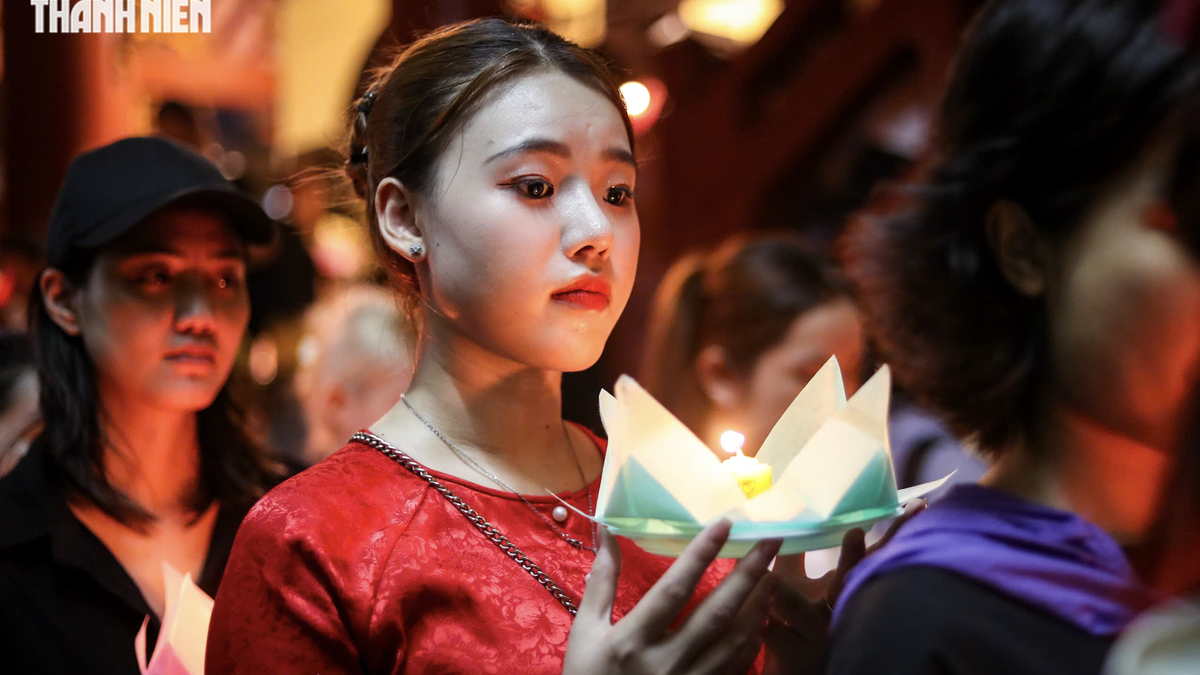























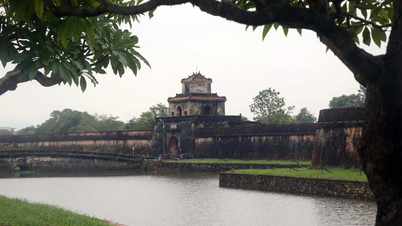

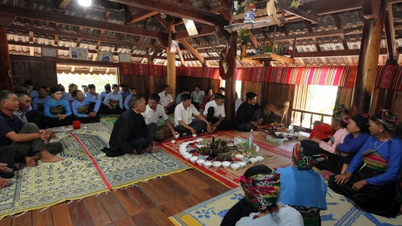












































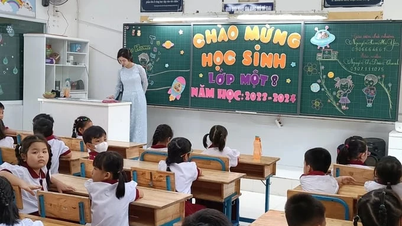













Comment (0)